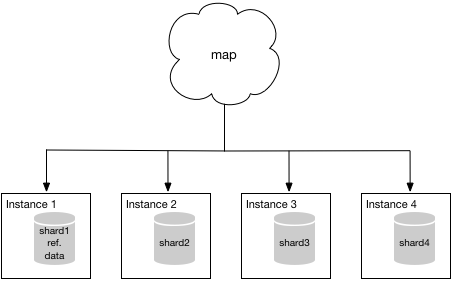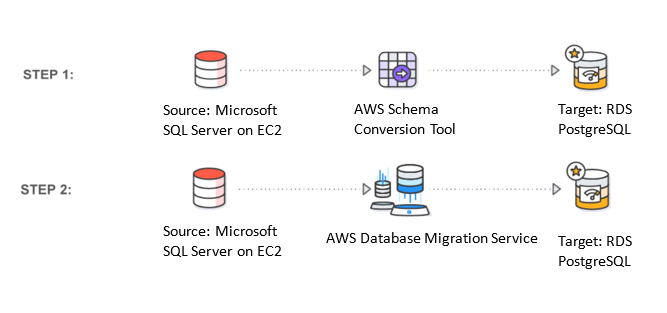AWS Database Blog
Category: Migration & Transfer Services
Use SQL to map users, roles, and grants from Oracle to PostgreSQL
July 2023: This post was reviewed for accuracy. Many customers are undertaking the journey to open source relational database management system (RDBMS) databases. With the latest release of the AWS Schema Conversion Tool (AWS SCT), it’s easy to change your database engine. AWS SCT makes heterogeneous database migrations easier by automatically converting procedural code from […]
Introducing Data Extractors in AWS Schema Conversion Tool Version 1.0.602
We are pleased to announce the recent release of version 1.0.602 of the AWS Schema Conversion Tool (AWS SCT). The new version includes a new key capability—data migration agents that extract data from Oracle, MS SQL Server, Teradata, IBM Netezza, Greenplum and HPE Vertica data warehouses, prepare, optimize and upload it to Amazon Redshift. The […]
Migrating Oracle Database from On-Premises or Amazon EC2 Instances to Amazon Redshift
Ballu Singh and Pubali Sen are solutions architects at Amazon Web Services. AWS Database Migration Service (AWS DMS) helps you migrate databases to AWS easily and securely. The AWS Database Migration Service can migrate your data to and from most widely used commercial and open-source databases. The service supports homogenous migrations such as Oracle to […]
Events and Notifications in AWS Database Migration Service
We’ve recently added a new feature in AWS Database Migration Service (AWS DMS)—the ability to receive DMS events notifications, such as email messages, text messages, or calls to HTTP endpoints, through Amazon Simple Notification Service (Amazon SNS). You now can subscribe and receive notifications for two types of events—events related to DMS instances and events […]
Reduce Resource Consumption by Consolidating Your Sharded System into Aurora
Ed Murray is a manager at Amazon Web Services. When faced with the prospect of scaling your relational workload, you have generally had two options available: scale up or scale out. Scaling up is easy—just buy a bigger database host. Scaling out is more difficult. It requires you to shard your database into several physically […]
How to Migrate Your Oracle Database to Amazon Aurora
Ed Murray is a manager at Amazon Web Services. This blog post gives you a quick overview of how you can use the AWS Schema Conversion Tool (AWS SCT) and AWS Database Migration Service (AWS DMS) to facilitate and simplify migrating your commercial database to Amazon Aurora. In this case, we focus on migrating from […]
Streaming Changes in a Database with Amazon Kinesis
Emmanuel Espina is a software development engineer at Amazon Web Services. In this blog post, I will discuss how to integrate a central relational database with other systems by streaming its modifications through Amazon Kinesis. The following diagram shows a common architectural design in distributed systems. It includes a central storage referred to as a […]
Introducing AWS Schema Conversion Tool Version 1.0.502
We are pleased to announce the recent release of version 1.0.502 of the AWS Schema Conversion Tool (AWS SCT). Two key capabilities included with this release are the use of Amazon Aurora with PostgreSQL compatibility as a target and integration with AWS Database Migration Service (AWS DMS). Amazon Aurora with PostgreSQL compatibility as a target […]
A Large-Scale Cross-Regional Migration of NoSQL DB Clusters
Andrey Zaychikov is solutions architect at Amazon Web Services In this blog post, I will share experiences from a cross-regional migration of large-scale NoSQL database clusters (from Europe to the U.S.). The migration was a joint project implemented by the Ops team of our reference customer, FunCorp, and AWS Solutions Architects. “Our flagship product, iFunny, […]
Cross-Engine Database Replication Using AWS Schema Conversion Tool and AWS Database Migration Service
Prahlad Rao is a solutions architect at Amazon Web Services. Customers often replicate databases hosted on-premises to the AWS Cloud as a means to migrate database workloads to AWS, or to enable continuous replication for database backup and disaster recovery. You can both migrate and perform continuous replication on the AWS Cloud with AWS Database […]









